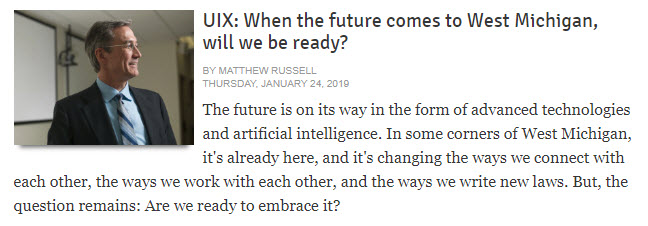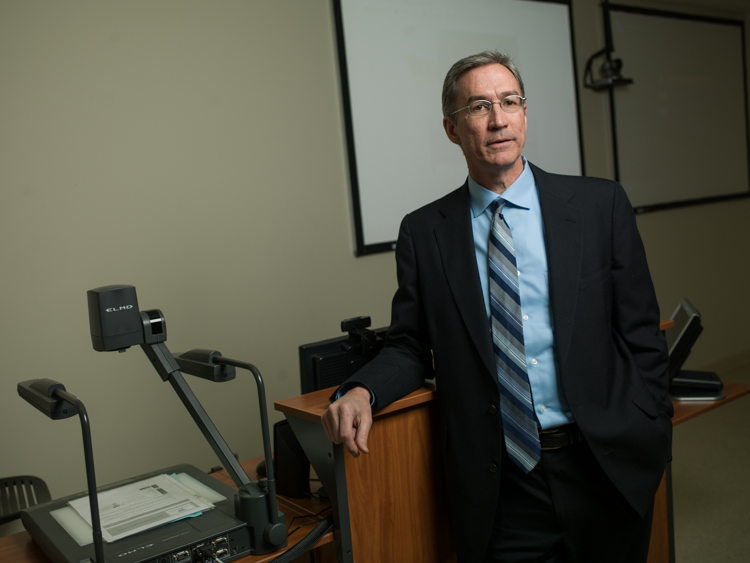UIX: When the future comes to West Michigan, will we be ready? — from rapidgrowthmedia.com by Matthew Russell
Excerpts (emphasis DSC):
“Here in the United States, if we were to personify things a bit, it’s almost like society is anxiously calling out to an older sibling (i.e., emerging technologies), ‘Heh! Wait up!!!'” Christian says. “This trend has numerous ramifications.”
Out of those ramifications, Christian names three main points that society will have to address to fully understand, make use of, and make practical, future technologies.
- The need for the legal/legislative side of the world to close the gap between what’s possible and what’s legal
- The need for lifelong learning and to reinvent oneself
- The need to make pulse-checking/futurism an essential tool in the toolbox of every member of the workforce today and in the future
Photos by Adam Bird
From DSC:
The key thing that I was trying to relay in my contribution towards Matthew’s helpful article was that we are now on an exponential trajectory of technological change. This trend has ramifications for numerous societies around the globe, and it involves the legal realm as well. Hopefully, all of us in the workforce are coming to realize our need to be constantly pulse-checking the relevant landscapes around us. To help make that happen, each of us needs to be tapping into the appropriate “streams of content” that are relevant to our careers so that our knowledgebases are as up-to-date as possible. We’re all into lifelong learning now, right?
Along these lines, increasingly there is a need for futurism to hit the mainstream. That is, when the world is moving at 120+mph, the skills and methods that futurists follow must be better taught and understood, or many people will be broadsided by the changes brought about by emerging technologies. We need to better pulse-check the relevant landscapes, anticipate the oncoming changes, develop potential scenarios, and then design the strategies to respond to those potential scenarios.










